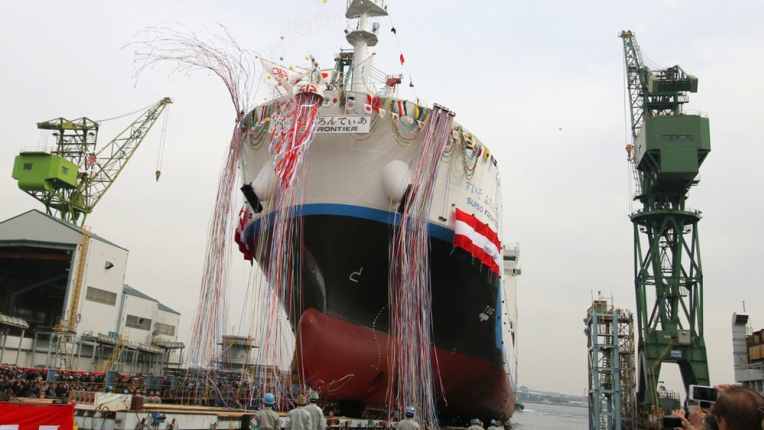Woodside, Cheung Kong pitch for green hydrogen funds
by Angela Macdonald-SmithHong Kong's Cheung Kong Group and Woodside Petroleum are among the companies vying to secure public funding to advance ambitious hydrogen plans, with an eye to capturing a share of what is expected to become a major export opportunity for Australia.
A proposal for a 10-megawatt electrolyser in south-east Australia involving CK's Australian Gas Infrastructure Group is among several expected to be submitted by Tuesday's deadline to the Australian Renewable Energy Agency, for consideration in its $70 million funding round for "green" hydrogen.

The project will feed hydrogen into a city's gas distribution system, said AGIG chief executive Ben Wilson, whose company is focused on domestic ventures, while acknowledging that the big opportunity lies in exports.
LNG exporter Woodside is looking to trial technology to help reduce the cost of renewables-based hydrogen and is working with partners in Japan and South Korea in the expectation that a large-scale hydrogen production industry will develop by 2030.
"Woodside has been working for more than two years on its hydrogen business and believes it will be a significant part of the company's future," chief executive Peter Coleman said.
"In the longer term, hydrogen, and hydrogen-carrying products such as ammonia, effectively allow for the export of Australia's renewable energy resources."
BP and Shell are exploring hydrogen opportunities in Australia, as are Norwegian fertilisers maker Yara, French utility Engie and renewables developer Neoen, among others. Miners BHP, Anglo American and Fortescue Metals Group are examining the potential to use hydrogen to replace diesel for their mining vehicles and industrial plants at mine sites.
While Western Australia hosts two giant green hydrogen export proposals – one including Macquarie and wind turbine supplier Vestas and another where Germany's Siemens will provide technology for Hydrogen Renewables Australia – many other smaller ventures are proposed around the country.
"Just like in natural gas we've got massive competitive advantages in hydrogen because of our incredible renewable resources," Mr Wilson told The Australian Financial Review.
"There's a big prize there for export, and there’s a big prize for transport, particularly for heavy haulage, long distances."
Mr Wilson said he expected the projects submitted to ARENA to involve clean hydrogen production at a cost of easily more than double the $2 a kilogram stretch target cited in the Morrison government's technology road map last week.
He said the projects would probably have a cost in the mid- to high $30s a gigajoule, compared to the target which is equivalent to about $15/GJ.
Woodside is working with Japanese LNG importer JERA, Marubeni and IHI to study large-scale exports of ammonia produced in WA, initially from so-called "blue" hydrogen, made from natural gas, but later transitioning to "green" hydrogen made from renewables.
The ammonia, made from combining hydrogen with nitrogen, would be used to decarbonise coal-fired power generation in Japan, which aims to cut greenhouse gas emissions by 26 per cent by 2030 from 2013 levels. Ammonia can be used directly for power generation without producing carbon emissions when burnt.
Woodside said "blue" hydrogen would accelerate a green hydrogen future as it encourages the development of needed infrastructure and lowers transport and distribution costs. Production costs are currently about a third of renewables-based hydrogen.
AGIG's focus on blending hydrogen into gas networks to replace up to 10 per cent of gas made sense as a "stepping stone" to build up domestic capabilities and credibility that would be important to support an export industry, Mr Wilson said.
AGIG's most advanced project, a 1.25 MW hydrogen plant in southern Adelaide, is due to come online in July.
EY's energy leader for Oceania, Matt Rennie, said he expected ammonia production to be the first market for hydrogen to reach import price parity, but that it would take several years to enter energy, industrial and transport markets without subsidies.
"Based on the momentum in both economics and policy, I have no doubt the hydrogen economy will be fully open for business by 2023," Mr Rennie said.